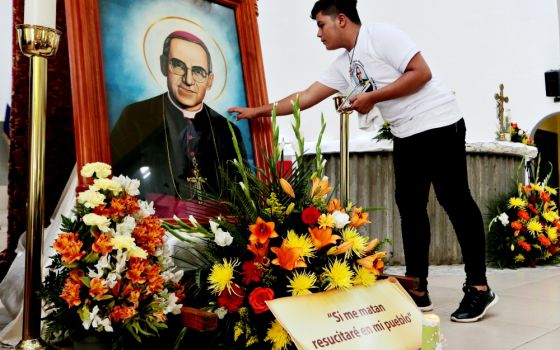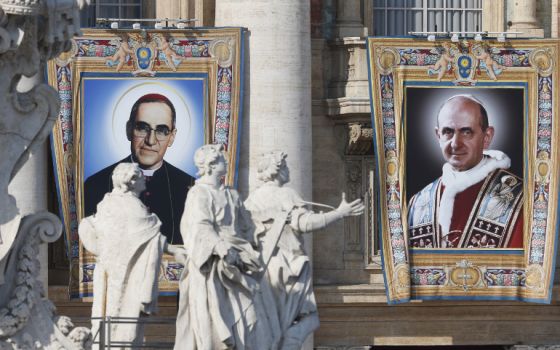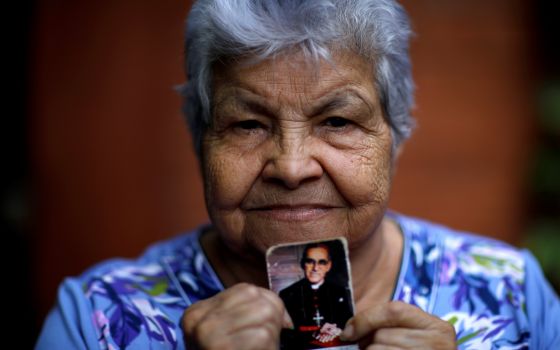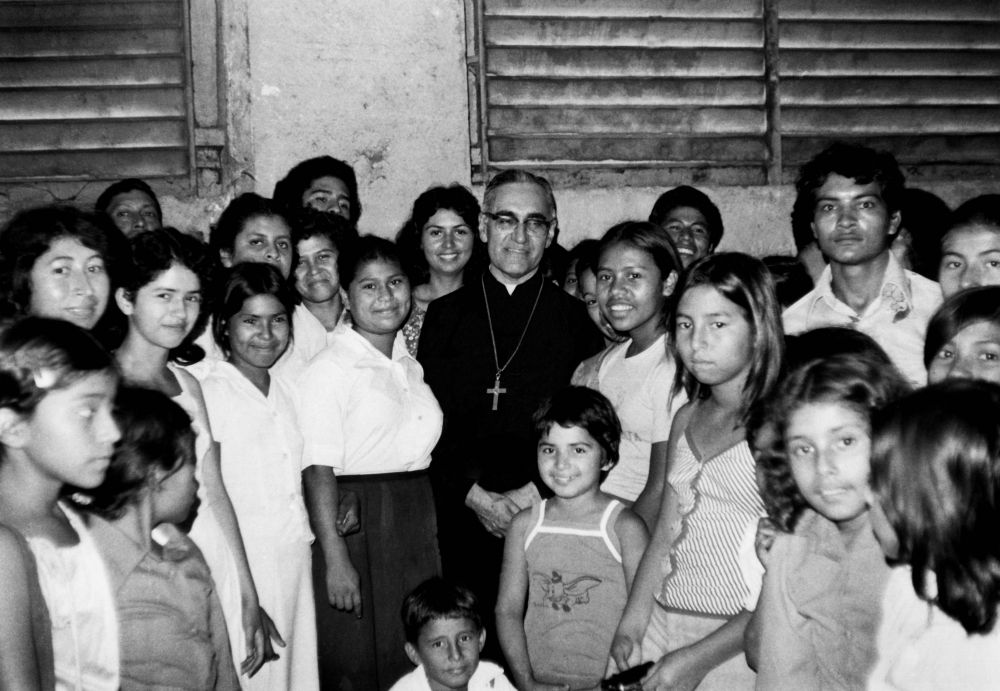
Archbishop Óscar Romero poses for a photo with women and children in this undated photo from El Salvador. (CNS/Octavio Duran)
Franciscan Br. Octavio Duran wishes he had been able to tell Archbishop Óscar Romero "thank you" before the revered Salvadoran churchman was gunned down and killed on March 24, 1980.
Thank you "for trusting me," thank you "for having marked my life in such a positive way," and thank you for the profound example as a "friend, pastor and prophet."
Widely known as Romero's "unofficial photographer" for the last two years of the churchman's life, Duran, now 63, was a 21-year-old seminarian in 1977 at San José de la Montaña seminary for the Archdiocese of San Salvador, El Salvador when he first met Romero, whose canonization is expected later this year or in early 2019.
Duran had been attracted there "by the social and political situation in El Salvador and the role the church had there as savior," he wrote in an essay titled "Remembering Oscar Romero."
"As a seminarian I understood the responsibility to preach a liberation that comforts the oppressed and condemns the oppressor," he wrote.
Romero did just that — fearlessly and tirelessly, Duran emphasized in a recent exchange with NCR.
"Romero awakened a worldwide interest in the content of his homilies, his life, his transformation, his love of the poor, his being a voice for the voiceless," Duran told NCR.
The archbishop was assassinated a day after a homily in which he pled with government soldiers to cease killing their innocent countrymen.
"No soldier is obliged to obey an order to kill if it runs contrary to his conscience," he said in that homily, which was broadcast over his archdiocese's radio station.

Franciscan Br. Octavio Duran is pictured on the grounds of the Basilica of St. Anthony in Padua, Italy. Duran was a 21-year-old seminarian in 1977 when first asked to interview Blessed Archbishop Óscar Romero. (Courtesy of Octavio Duran)
Through seemingly chance events, Duran came to play a key role in sharing Romero's outspoken criticism of the Salvadoran regime's killings, mutilations, rape and torture — and of U.S. backing for the junta. He also denounced rebel guerilla atrocities.
The director of San Salvador's Catholic radio station had heard Duran read at a funeral Mass and invited the seminarian to work two hours per night at the station.
"One day during a boring philosophy class, I got an unexpected call" from the station, he recalls, asking him to interview Romero on-air for his weekly program.
It would be the first of many such interviews and provided the opportunity for Duran to ask if he might be allowed to accompany the archbishop during some of his pastoral travels.
"I was using a point-and-shoot camera in the beginning, but later on I was asked to share my photos with the archdiocesan newspaper and I realized it was time for something better," he said.
Romero not only agreed, but would give Duran the equivalent of about $200 U.S. to purchase a serviceable camera to document the prelate's activities.
"Romero awakened a worldwide interest in the content of his homilies, his life, his transformation, his love of the poor, his being a voice for the voiceless."
—Franciscan Br. Octavio Duran
That Canon AT-1 with a 50 millimeter lens was used by Duran to record what are now historic photos of the martyr, many of them collected in the 2009 biography by Scott Wright, Oscar Romero and the Communion of Saints.
Duran feared the camera might lead to dire consequences when a contingent of six, including himself and Romero, were searched and harassed in late 1979 by junta soldiers. Romero's cohort had been making its way to the small church of the San José Los Sitios community in Chalatenango, El Salvador, where the archbishop was going preside at a Mass to mark the local corn festival.
Duran's camera went unmentioned.
"After long interrogations, we continued on to the church," Duran wrote in his essay.
"The people received the archbishop happily, with hugs and music. But Romero's uneasiness after what had happened was obvious. In the church, the archbishop, trembling and his voice cracking, asked that Mass be held outside. He was concerned that if something worse should happen, such as shooting, the people would be able to escape into the open countryside." Duran wrote.
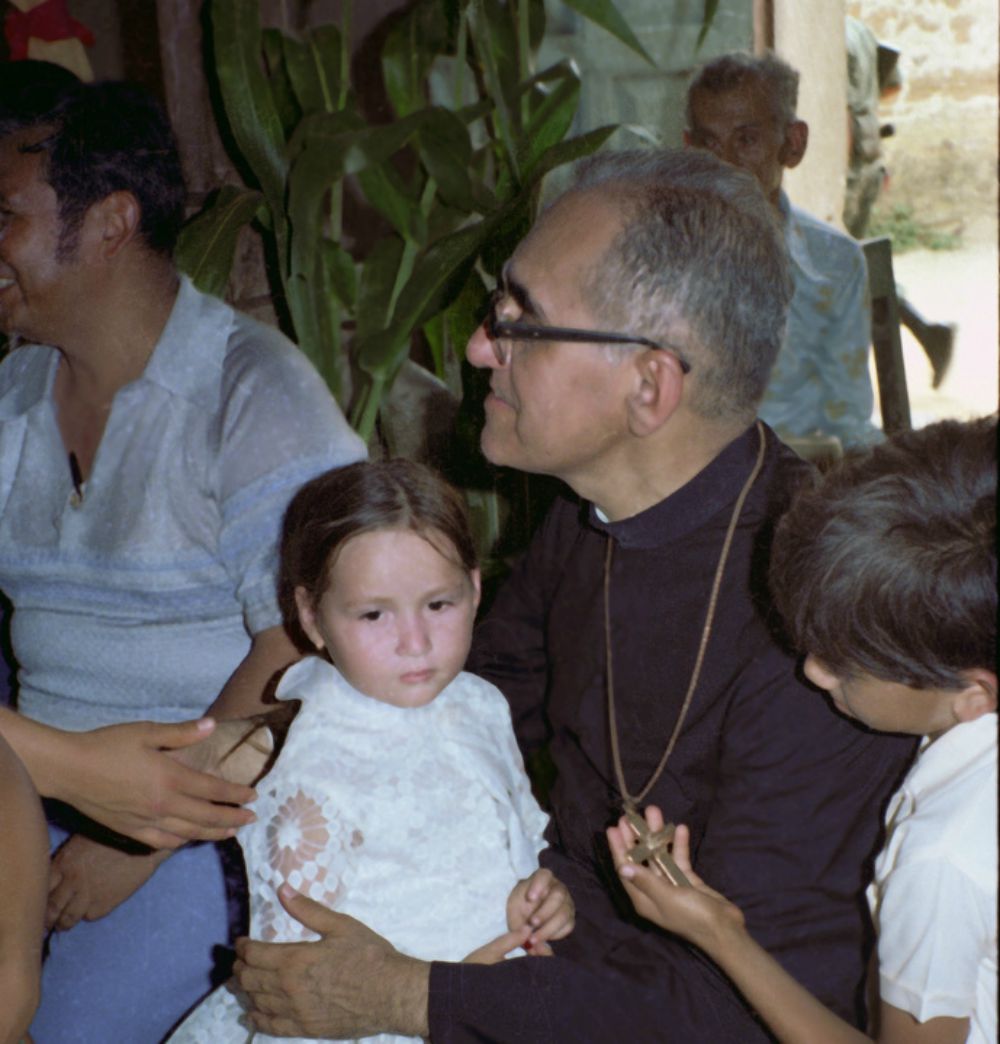
Archbishop Óscar Romero is pictured inside the church at San Antonio Los Ranchos in Chalatenango, El Salvador, in 1979. (CNS/Octavio Duran)
Duran continued, "Suddenly, while still in the church, a little boy and girl went up to Romero. She hugged him and the boy took hold of the cross the archbishop wore around his chest. It was like a signal that everyone needs a Simon, the Cyrenian, who helped carry Jesus' cross, in our own lives to help us carry our crosses."
Duran snapped his lens. The resulting iconic photo circulated globally.
Death threats, killings of priests and church workers, atrocities against innocent citizens, and bombings of the Catholic radio facility "did not stop Monseñor Romero from announcing and denouncing," he said.
The Los Sitios incident, he told NCR, illustrates how "courage and [absence of] fear are not the same thing."
"A person can be courageous and still fear," Duran added. "That's what the prophets did."
And Jesus, too, he said, alluding to Christ's appeal to God described in Luke 22:42: "Father, if you are willing, take this cup from me; yet not my will, but yours be done."
"I can't image how many times Romero read this passage without even thinking that he was going to go through the same fears," Duran said. "Romero was a human being chosen by God to show us, even in this day and age, that he speaks through his prophets."
Advertisement
Romero publicly acknowledged the likelihood of his assassination, Duran pointed out. "He just didn't know when. His response to the death threats he received was: 'If God accepts my life as sacrifice, my blood will be a seed of freedom.' "
At one point, Duran said, "He confided in me that his biggest fear was to be tortured."
However, Duran noted, much of their time together was shared "discussing mundane things."
"I was 21 years old, and it was a relationship of seminarian and archbishop, not as a two friends of the same age," he explained. "I did many radio interviews with him. So we talked mostly about the things related to the message that he wanted to communicate."
He is not aware of extant recordings of the programs "because we used the same reel all the time."
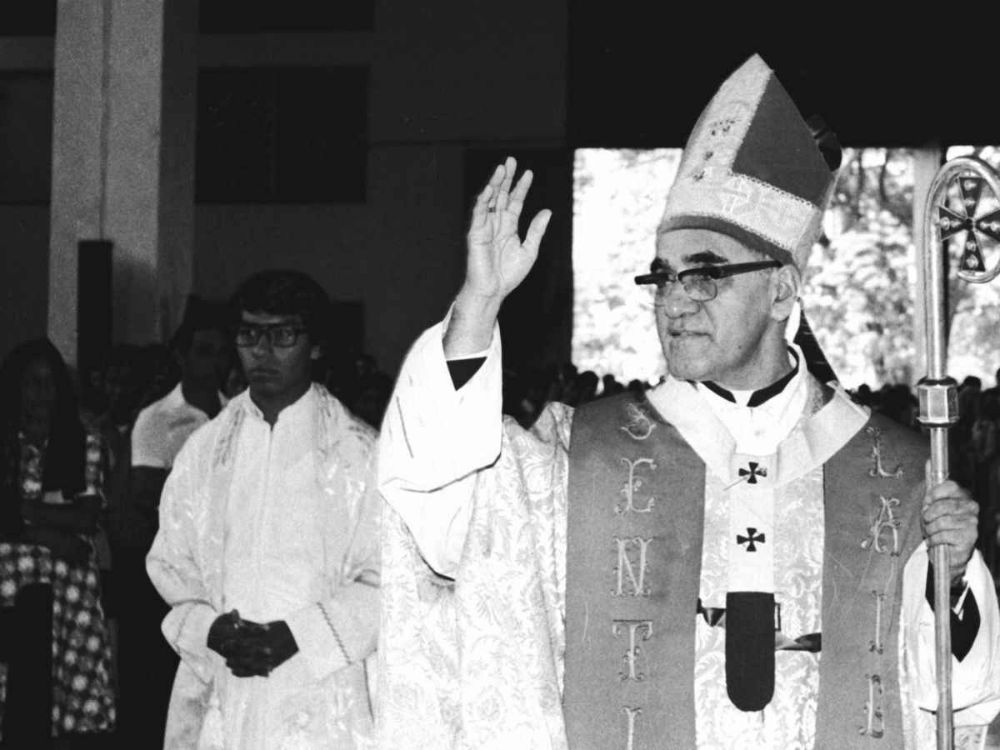
During the last two years of Blessed Archbishop Óscar Romero's life, Franciscan Br. Octavio Duran took many iconic photographs of the future saint, including this one. (CNS/Octavio Duran)
Duran proudly shared by email excerpts from Romero's diary that mention the seminarian broadcaster-photographer.
In one, dated Christmas Day 1979, three months before he was shot near the heart while offering a memorial Mass in the small chapel of San Salvador's Divine Providence Hospital, Romero talks about preparing for "the recording for tomorrow's radio program." He praises "Octavio" for the seminarian's "great willingness to collaborate in this apostolate."
Duran was at the seminary near the hospital when he heard of Romero's shooting, reported journalist Sam Lucero in a 2015 feature.
"We had just finished the evening prayers and the porter came into chapel and talked to one of the priests and we were given the news Archbishop Romero had been shot," he told Lucero. "We did not know if he had survived, but he was taken to a private clinic."
The seminary rector, now Cardinal Gregorio Rosa Chavez, called Duran into his office. "He said, 'Let's go and see what happened.' We took a cab and we went down to this clinic, and I remember seeing his body lying on a metal stretcher. … I stayed there until the autopsy was done and then we came back," he said in the 2015 interview.
Duran told NCR he feels Romero "has stayed with his people even after death" and quoted the martyr: "As pastor, I am obliged by divine order to give my life for those I love, that is all Salvadorans, even those who will assassinate me. If they kill me, I will rise again in the Salvadoran people."
"His message continues inspiring not only Salvadorans, but people from around the world and all walks of life," Duran said. "It's moving to see people praying at his tomb, as if he were alive and listening to their suffering."
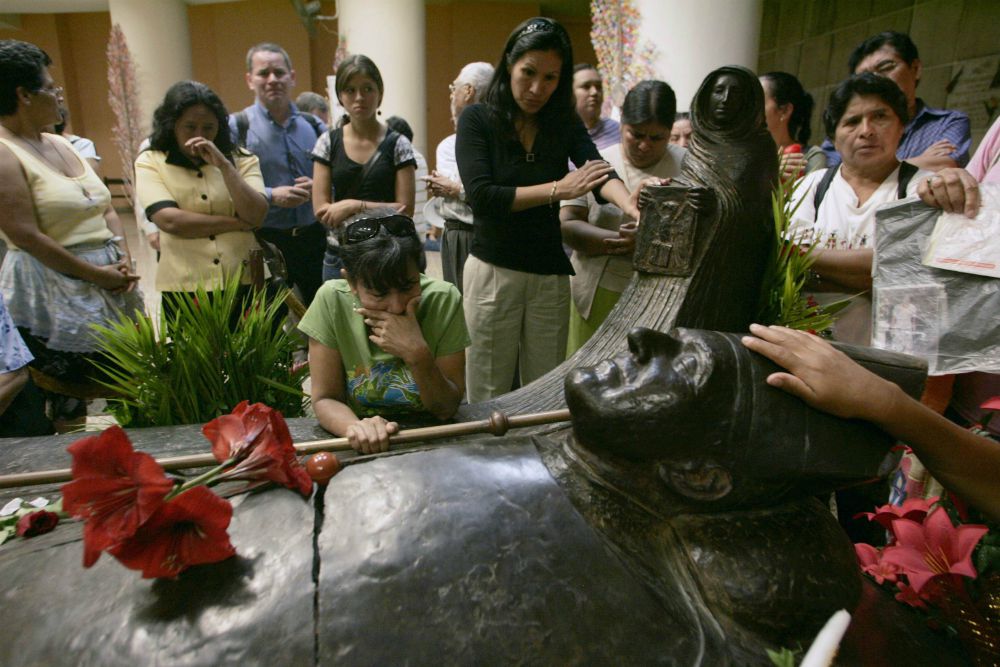
Salvadorans pray March 24, 2009, at the crypt where Archbishop Óscar Romero was buried at the cathedral in San Salvador, El Salvador. Romero was assassinated while celebrating Mass in San Salvador in 1980. (CNS/Reuters/Luis Galdamez)
"His image can be seen in mural portraits, posters, T-shirts, caps, making his iconic face known to even the younger generation of Salvadorans, who start learning at a very young age what this courageous man stood for," Duran said, adding, "It is not unusual to hear the common people quoting him in regular conversation to make a point where justice should prevail."
Yet, he said, "not everyone thinks that Romero's message is a positive one. There are still people who think that he divided the country and that he politicized the Gospel … and hate him to this day."
On one pastoral visit, a Presbyterian minister asked Romero if he would consider training Duran in broadcasting. There was no formal broadcast training in El Salvador at that time.
"When the bishop asked me, 'What do you think?' I could not believe that he was actually considering this, and so I hesitated to answer. But I said I would do it, even though I didn't know the implications of his proposal," Duran said.
Romero's death shattered Duran, and his own dreams faded, he said.
However, during Romero's funeral, that same Presbyterian pastor promised Duran that if it was Romero's will that Duran go abroad and study, he somehow would see it would happen.
"His message continues inspiring not only Salvadorans, but people from around the world and all walks of life."
—Franciscan Br. Octavio Duran
Within a few months, the minister had helped facilitate and finance Duran's move to the Mexican American Cultural Center in Texas, where he lived while attending the San Antonio College. It was in San Antonio where he began his Franciscan journey with the Franciscans of Holy Name Province, whose ministry is mainly on the East Coast.
[Dan Morris-Young is NCR's West Coast correspondent. His email is dmyoung@ncronline.org.]
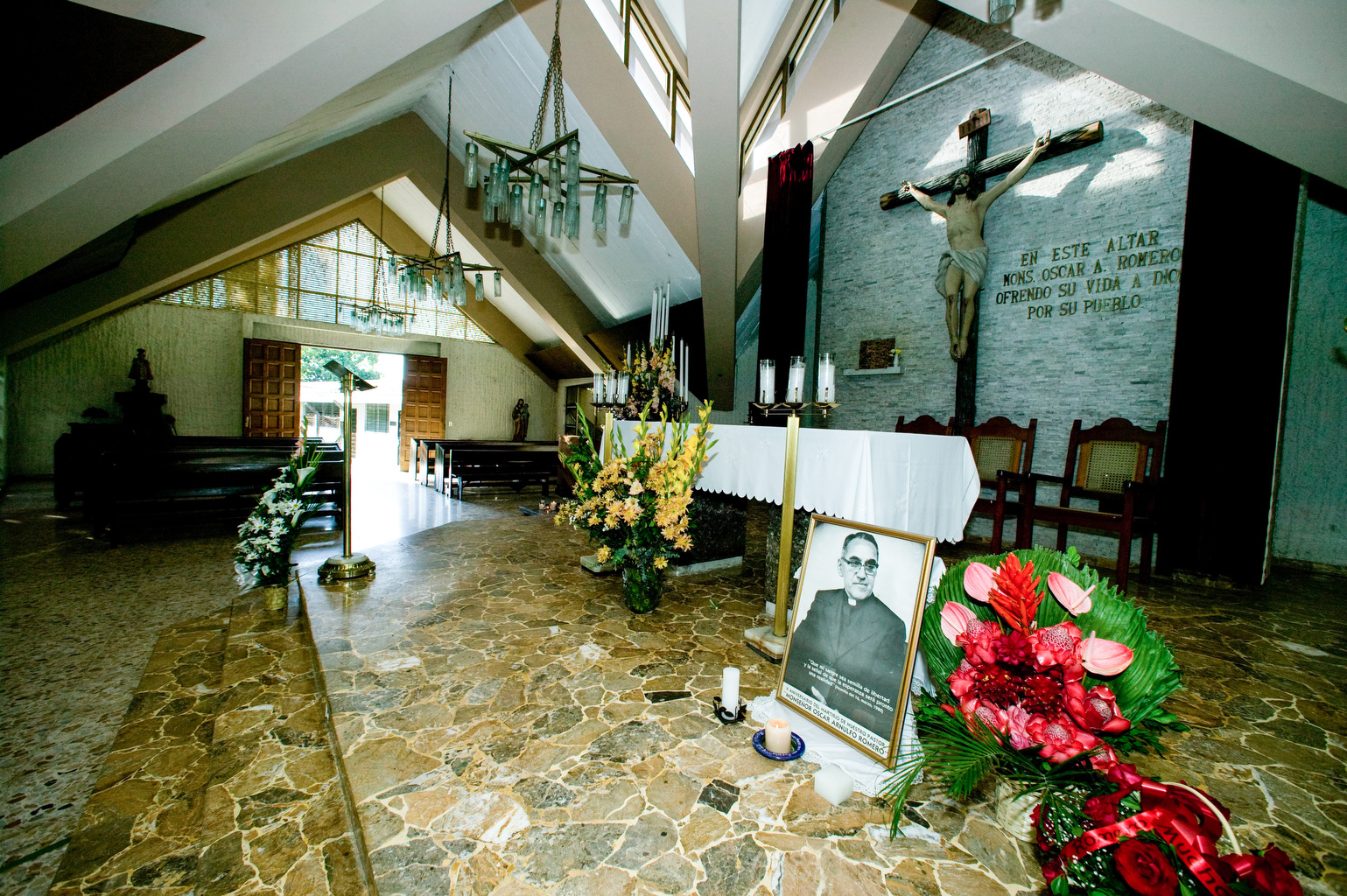
An image of Archbishop Óscar Romero of San Salvador is seen in 2006 in the chapel of Divine Providence Hospital in San Salvador. The archbishop was shot by unidentified gunmen as he celebrated Mass in the chapel March 24, 1980. (CNS/Octavio Duran)





